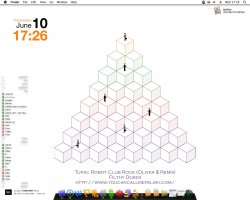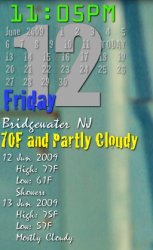I got the iTunes meter to work no problem, but the fan speeds just won't work. I stored both fan.sh and smc.custom in the same folder, made them both executable and then in Geektool (Shell) osascript /path/to/script/fans.sh and it just won't work. Nothing appears. When I click on the raw file of fans.sh it opens a very short document in text edit. Is this correct?
osascript precedes the path to the script only for apple scripts. You just need to type /path/to/fans.sh in shell. If it still isn't working, try running it in terminal and see what happens. (type ./fans.sh once you are in the directory where it's kept.)





